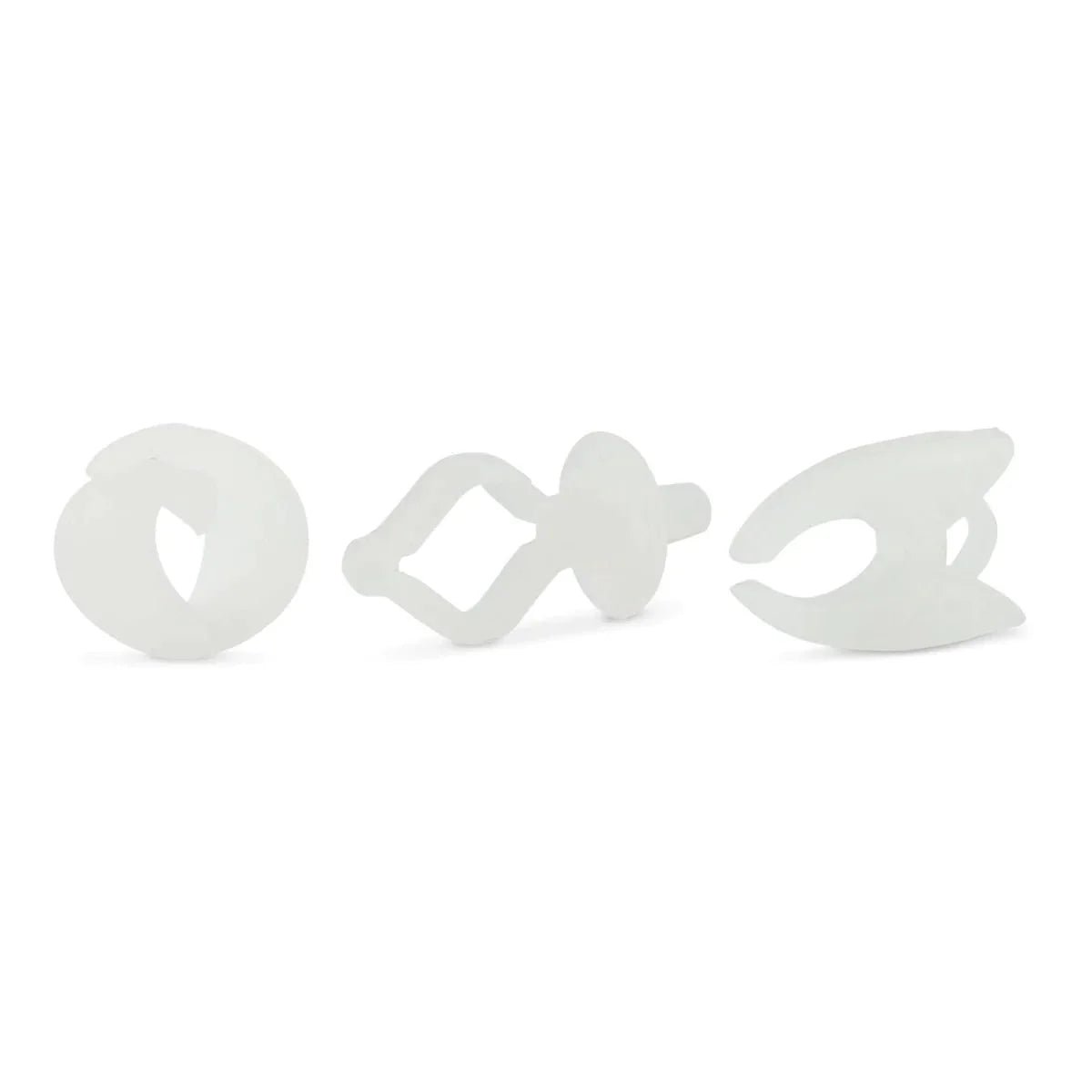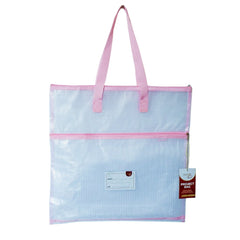Your Guide To Invisible Hemming
I can’t see the stitches!
Can you?
Have you ever looked closely at the hem of a nice pair of pants and wondered how the stitches look practically invisible? It’s done with a blind hem stitch, and you can learn how to do it, too! In this post, I’ll show you how to sew an invisible hem using your sewing machine.
I noticed that the hem of my viscose black trousers had come loose. Looking at the hem, I thought.. I want to fix this with a blind stitch using invisible thread. If it works, I can use this technique for hems on all my skirts and dresses as well! A new challenge!
I’ve stitched a blind hem before, but I haven’t really mastered the technique because I don’t use it enough—so making this blog post is a little refresher for me, too. Have you ever tried blind hemming?
I didn’t know upfront if combining the blind hem technique and the invisible thread was a good idea. So, I did a little research about machine stitching with invisible thread, tried to make the steps for sewing blind hems as clear as possible, and started experimenting on scraps with the blind hem foot, the blind hem stitches, and transparent thread. Here is what I found—I hope it will be interesting for you!
Tips for Using Invisible Thread
Invisible or transparent thread is a synthetic monofilament, meaning it's made from just one strand of synthetic fiber. It is very fine and has more stretch than regular sewing thread. You can find invisible thread in nylon (polyamide) or polyester. The nylon one is more prone to discolouration and not as heat resistant as the polyester thread, but softer and more invisible. You can use it for lightweight fabrics but it can also handle sturdier material. Invisible thread is used for quilting, attaching bias tape, hemming, attaching appliqués, adding embellishments, and more…
My local store only had Gütermann Transparent Thread, which is 100% Polyamide, so I tried that one.
Here are some tips for sewing with invisible thread in general:
-
Use a very thin needle, a 60 or 70. When you see how thin this thread is, it makes sense to use a very fine needle.
-
Decrease your top thread tension. Especially for hems you want the stitches to be loose. I’ve read that quilters also advise to decrease your top thread tension when using invisible thread.
-
Only use invisible thread for the top thread. Most sewing experts advise not to use this thread in the bobbin, especially if you have little experience with this thread and with adapting thread tension in general. It is really hard to get it right, and if you get in trouble this thread is hard to remove/untangle because you can hardly see it. Additionally, it is hard to wind a bobbin correctly with this thread. You have to go very slowly in order not to stretch the thread too much. So instead, try matching your bobbin thread as much as possible with your fabric.
- Use a vertical spool stand if you’re having problems with the thread tangling around your spool holder.. That should help. You can also wrap one of these little net vests around your spool for a more even unwinding.
-
Mark the end of your invisible thread with a marker to facilitate threading your needle. It will help you see the thread end. And double check your thread path. It's so tough to see that you may accidentally miss some of the loops and guides in your thread path without realizing it.
-
And, the main tip: Practice on scrap fabric first!
How to Sew a Blind Hem with a Blind Hem Foot
I love blind hems on clothing. Using this clever method of folding and stitching, you can create machine stitched hems that are almost invisible from the outside. It’s a fantastic way to create a deep hem on a skirt, unlined jacket, or pants. But it takes a bit of time to master the technique and you need an extra tool—a blind hem presser foot.
A blind hem or a blind stitch presser foot is often included in the toolbox that comes with a sewing machine. If you are looking for one, we have this foot in our universal 32 pieces presser foot set. It is foot number 8.
The blind hem foot can look a bit different depending on the brand, but the principle is the same. You align the folded fabric with the built-in vertical guide. This assures that the zigzag-like stitch is catching the right amount of fabric. The MadamSew foot is also adjustable. You can move the plastic guide left and right to adapt to your hem width.
You need some fabric to make a blind hem, so it works best with wider hems, 1 inch wide or more.
A blind stitch foot works best with medium weight and heavier fabrics. It can also be used with knits. It’s more difficult with very fine sheer fabrics, but with my viscose fabric it worked perfectly fine, so always test if you’re having doubts.
A blind hem stitch normally looks like the image below. It has some small zigzags that are on the right side and every few stitches it jumps out to grab the outer fabric on the left.
Make sure that tips/triangle tops jump out to the left. I first tried my stitch number 5 where the tips go to the right side... That didn’t work ;-) Number 7 and 8 on my sewing machine are for sewing blind hems.
Check your sewing machine manual to see which stitches are meant for blind hems. You can set the stitch width wider or shorter depending on your preferences. My width was set to 3.5.
Blind stitching requires some prior marking, folding, and pressing before you can start sewing. I will use marks in different colors so I can explain clearly how to fold the fabric, but once you understand the principle, you can just use a hot hem ruler and press the folds without marking.
Steps for Folding Fabric for Blind Hem
First, decide where you want your hem to be and make sure you have some extra fabric for a double folded hem, in this case two inches. I’m making my double folded hem one inch wide. I took pictures with two different fabrics to make it as clear as possible.
Grab a temporary marker to draw three lines (I’m using different colors to make it clear):
-
-
Draw the first line one inch from the edge This is the pink mark.
-
Draw the second line (yellow) one inch from the pink line. This is the second fold line. It indicates how long your pants or skirt hem will be.
- Draw a third line in white, one inch from the yellow line. This will be a guide line for folding.
-
Press your first fold like you would normally do, inwards, wrong sides facing. Don’t press it on the pink line! Press at ½ to ¾ inch from the edge and make sure the raw edge passes the pink line on the wrong side of the fabric. Pin in place if pressing isn’t enough.
Fold the fabric again for the second fold, this time along the yellow line, wrong sides facing. Pin again and remove the existing pins, if you have any.
The third fold is harder to explain. You have to fold the hem upward, right sides facing, along the white line. Don’t fold the overhanging part (the little extension, with the pink line on it). You should get a little extension on the inner edge. Don’t press this fold, it’s a temporary one. The lower part of the blind hem stitch will be stitched here. The top of the little mountains that the stitches make will end up on the right side of the fabric.
Here is how it looks on the outside:
Here you can see the inside:
Prepare your machine: Snap the blind stitch foot on the presser foot bar.
Select a blind stitch. Check your manual for specific stitch settings.
Thread your machine. If you are using invisible thread like I am, use a thin needle and loosen the top thread tension.
I stitched one part of the hem with normal sewing thread so you can see the stitches and one part with transparent thread as topthread and white polyester thread on my bobbin.
Lower the presser foot onto the hem. The vertical guide should sit right along the fold in front of your needle, and the flat part tucked in between the two layers. As the machine stitches, it will stitch behind that guide (for some blind hem feet across the guide) taking a tiny bite out of the fold every couple of stitches. Stitch slowly, making sure to keep the fold right up against the guide. Sew your blind hem all the way around.
Give the hem a press. This is how it will look once it’s stitched! The first picture shows the blind hem with contrasting thread and the second picture shows the blind hem with invisible thread.
And this is what the backside looks like.
After practicing on different fabrics, I’m confident that I can sew a blind hem on my comfy pants neatly. I think I will use the transparent thread on the top and black thread in the bobbin, with a 60 or 70 needle and a low thread tension. Or should I just use black thread? I’m now thinking the transparent thread is really great if you have a multicolored fabric and you want a color that blends in. What do you think? I tested a little piece with the transparent thread and white thread in the bobbin, so I can remove it easily.
I will be using the same technique for the hems on the XL dress I’m making for the holiday season. It is blue with red stripes! Are you making your own clothes these days?
Happy Sewing!!
An
Blogging for MadamSew.com
Follow us on Instagram, Facebook, YouTube and Pinterest for more sewing inspiration!

















8 comments
Great video and detailed instructions on blind hemming! I’ve been thinking about using this technique for a while now, and with your instructions I’m now ready to try it😊 Thank you:)
Great video and detailed instructions on blind hemming! I’ve been thinking about using this technique for a while now, and with your instructions I’m now ready to try it😊 Thank you:)
Excellent instructions and pictures!
great explaination, but can you adjust the width of the stitch to make the depth less .
This is by far the best best video with instructions for using a sewing machine foot that I’ve ever seen!
Explaination understandable, pictures fantastic.
You deserve a gold 🌟 star.
Thank you 😊